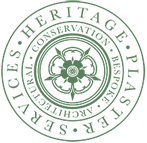Institute of Chartered Accountants in England & Wales, Moorgate Place
Project Details
Location:
Moorgate, London EC2R 6EA
Project Type:
Conservation & Restoration
Grade II listed property
A grade II listed building in the heart of the city of London.
The building, which was constructed between 1890 – 1893 too the designs of John Belcher, is seen as one of the finest examples of Victorian Baroque architecture.
The original building was extended in 1930-31 to the designs of JJ Joass, who was Belcher’s successor in practice, to a complementary design of the original building.
A further extension was built in 1966- 1970 when further room was required due to an expansion in the membership. This extension was designed by William Whitfield and is a modernist/brutalist design.
The ICAEW underwent a major internal refurbishment during 2020 which included an overhaul and update of the lighting; internet and electrical systems. This overhaul required the relocation of much of the existing M&E equipment and included an integration of several completely new systems.
Due to the architectural interest in all areas of the building, whether this be the original sections, or the more modern extensions, great care had to be taken to minimise any damage to the existing fabric and materials of the building. All repairs were completed using materials sourced so as to match those originally used.
In order to identify the correct materials an initial small sample was carefully taken from each area of site where works were to take place. These samples were then analysed to identify the exact nature and make up of each layer of plaster application. Through this analysis we were able to identify the several different mixes used during the various building expansions, as well as more localised historic repairs.
Once the analysis was completed, we were able to identify and source the correct materials required for each mix, these were then applied once the install of all the updated M&E was completed.
Included in these works was the bespoke manufacture of light fixing units.
There were several areas where no usual access for light installation was available, to negotiate this problem we designed and manufactured cast units that, once in place, the lights could be directly fitted to.
These units therefore allowed the light fittings to be installed whilst ensuring the minimal risk of damage to the adjoining original fabric and material of the building, whilst also providing a high quality of finish.












